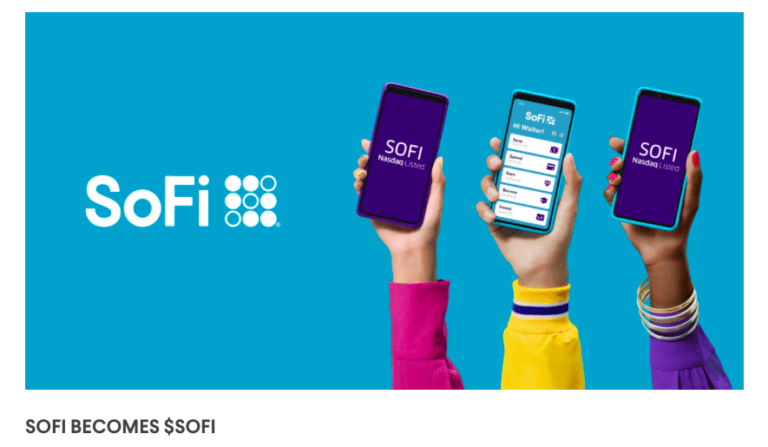Yesterday, Anthony Noto, CEO of SoFi, rang the opening bell on Nasdaq as his company celebrated its first day as a public company.
SoFi merged with a SPAC run by Chamath Palihapitiya called Social Capital Hedosophia V Corp. that closed its last day of trading on the New York Stock Exchange on Friday at $20.15. After completion of the merger the combined company’s shares were transferred to the Nasdaq under the ticker SOFI and the stock closed trading Tuesday at $22.65, a gain of 12%.
At its closing price yesterday the company is now worth $19.6 billion, based on the number of outstanding shares, a substantial increase from the $5.7 billion it was valued at during its last private funding round last year.
SoFi raised $2.4 billion in cash as part of the merger deal and the company said it will use the proceeds to “fuel growth, expand its markets and develop new products.”
In a message to its members yesterday Noto said:
Getting your money right requires more than a financial services provider, it requires a partner—a partner that is there for every major financial decision in our member’s life and all of the days in between. A new generation—raised online, made resilient by financial crises, but fundamentally optimistic about their futures—deserve a lifelong financial partner that can help them realize their aspirations… And as we become a publicly traded company, we look forward to leveraging the power of the public markets to fuel accelerated growth on behalf of our members.
The company has come a long way in the ten years since it launched. The first article I published on SoFi was back in 2012 when I interviewed co-founder Dan Macklin about what they were doing in student loans. Back then they were a quasi peer to peer lender with alumni providing financing primarily for recent graduates to refinance their student loans.
I remember their $1 billion equity round in 2015 which shook up the industry. No fintech company had ever raised that much in one round and it cemented SoFi as the leader in the space. It also helped them expand beyond lending into wealth management and insurance. When co-founder Mike Cagney resigned and a few months later Anthony Noto became CEO their push beyond lending really accelerated. They launched SoFi Money in beta in 2018 and SoFi Invest for stock trading launched in 2019.
Today, SoFi offers a complete suite of financial products for its members. From their announcement they now offer “everything from investing in fractional shares, robo accounts, and cryptocurrency, to student loan refinancing, personal loans, mortgages, and a credit card that helps you reduce your debt and, most recently, two day early paycheck into your SoFi Money® account”.
SoFi is the latest in the new breed of digital banks to become public with many more soon to follow. MoneyLion is hot on its heels and is expected to go public soon, Chime is exploring its options, arch rival Robinhood should go public later this month, Acorns has announced a SPAC deal while Aspiration and Stash are also exploring their options.
At the start of this year there were virtually no digital banks that were public (although LendingClub is now a bank and has been public since 2014) and by the end of the year we could have a dozen or more publicly traded digital banks.
Keep in mind that SoFi is not yet officially a bank. While they applied for a banking license last year they changed strategy and are acquiring a California community bank. That deal is expected to close by the end of the year and then they will be able to us their own banking license.
When that happens they will have a national bank charter with a full suite of financial products for their members. And they will have a cash war chest that should enable them to expand into other areas. They also have a brand new stadium with their name on it which is helping them become a nationally recognized brand. They are playing the long game and will be a formidable competitor in the fintech space for many years to come.


